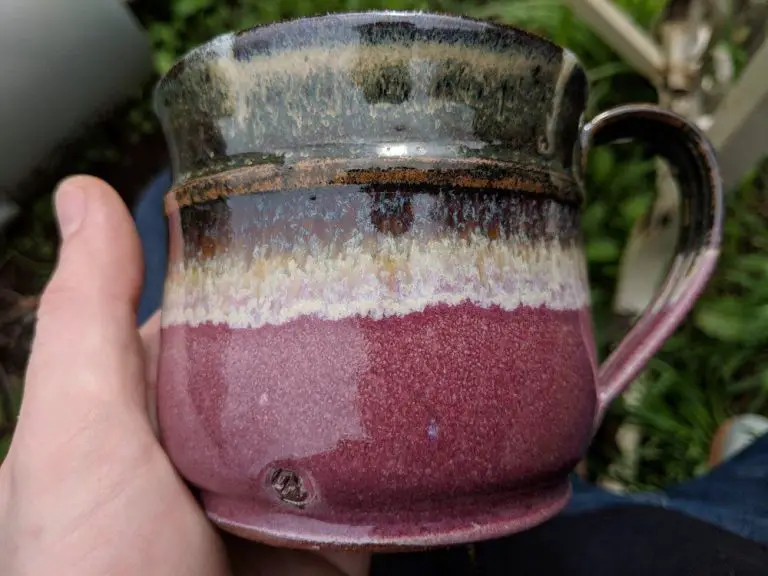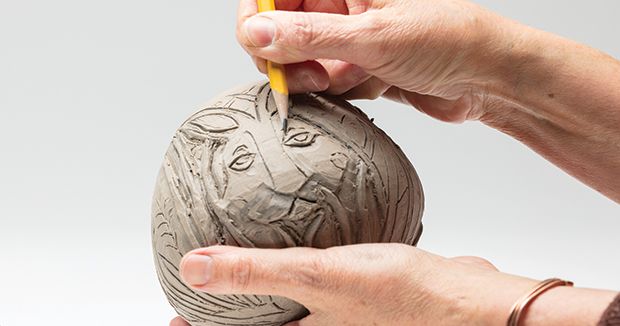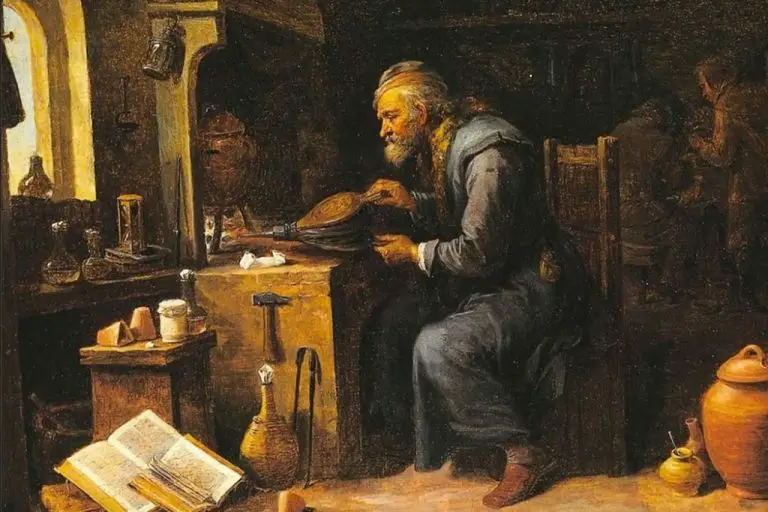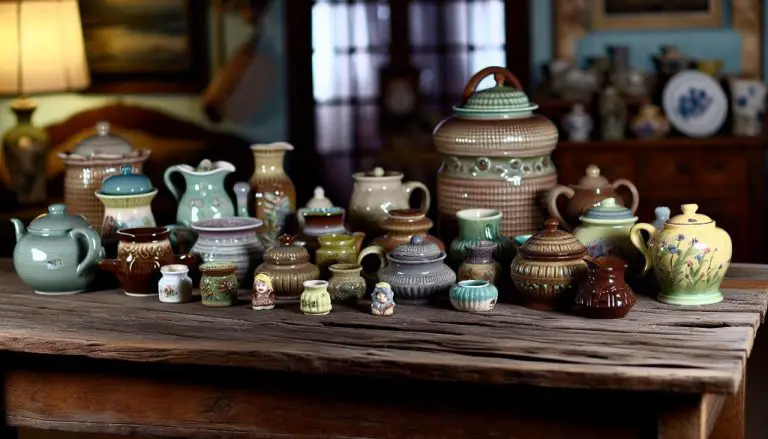What Are Clay Figurines?
Clay figurines are small sculptures made from clay that represent human forms, animals, mythical creatures, or other subjects. Clay has been used to create figurines and sculptures since prehistoric times, with some of the earliest known examples dating back over 20,000 years.
Clay figurines have been created across many cultures and civilizations throughout history, from ancient Mesopotamia and Egypt to pre-Columbian America. They served a variety of purposes, from religious rituals and funerary practices to children’s toys. Clay is an accessible, easy to work material that allows artisans to quickly shape and fire small, detailed sculptures.
Today, clay figurines remain popular for collectors and hobbyists. They are made from modeling clay, polymer clay, air-dry clay, and ceramic clay through methods like hand sculpting, molding, and casting. Clay figurines showcase popular characters from TV, movies, video games, as well as historical, cultural, and mythological icons. Their affordability and artistry help explain the widespread appeal of clay figurines across the world.
Sources:
https://www.youtube.com/watch?v=75jG8uKwaXY
Clay Types Used
There are several common types of clay used for making figurines:
Earthenware Clay
Earthenware clay is one of the most widely used clays for making figurines and pottery. It has a porous texture that allows water to pass through it. Earthenware contains iron and other mineral impurities that enable the clay to be fired at lower temperatures, typically between 1,800-2,100°F. The finished pieces have a rustic, textured appearance and earthy tones. Earthenware is easy to work with and relatively soft, making it ideal for hand-building and sculpting detailed figurines.
Stoneware Clay
Stoneware clay is dense, non-porous, and resists water absorption. It has excellent workability for throwing on the potter’s wheel and hand manipulation. Stoneware contains natural mineral fluxes that cause the clay to become vitrified and glass-like when fired at a high temperature between 2,200-2,400°F. This makes stoneware stronger and more durable than earthenware. Figurines made from stoneware have a smooth, refined surface quality.
Porcelain Clay
Porcelain is a highly refined, white burning clay. It is very plastic and smooth with excellent sculpting properties. Porcelain becomes fully vitrified and translucent when fired between 2,200-2,400°F. Due to its high kaolin content, porcelain lacks the iron and mineral impurities of other clays, resulting in a pure white color. The delicate translucency and refined surface makes porcelain ideal for figurines and decorative ware.
Specialty Clays
There are many specialty clays that offer unique properties for figurine making. These include raku, red/white earthenware, black clay, and terracotta. Raku firing creates dramatic crackled effects. Red and white clays provide bright, bold colors. Black clay is perfect for dark, graphic designs. Terracotta has a distinctive orange-red hue.
Sculpting and Shaping Methods
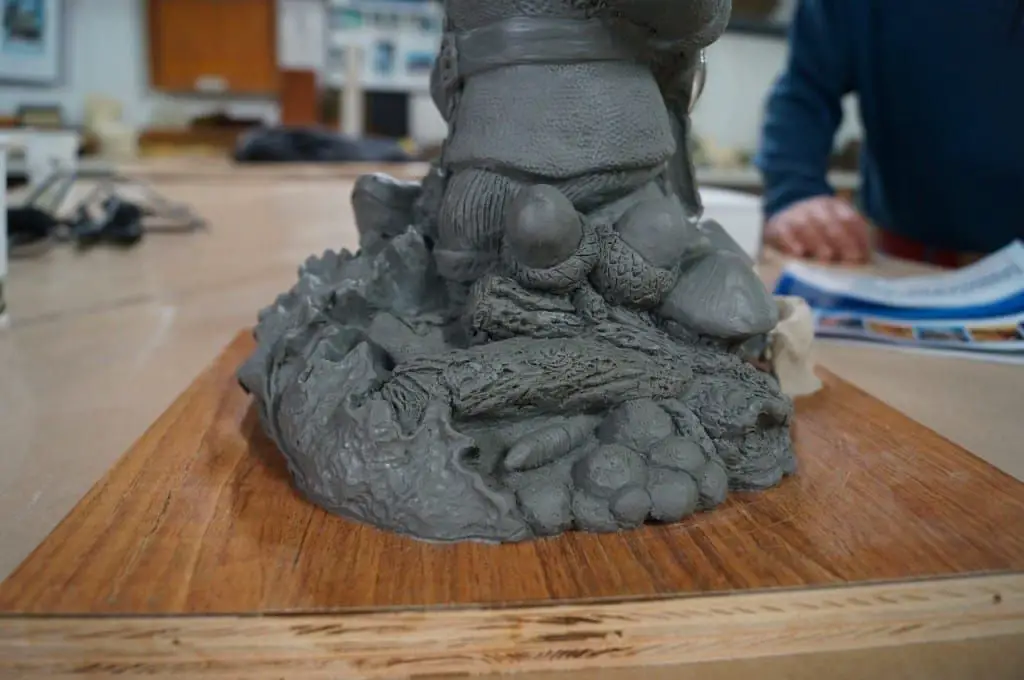
There are a few main techniques used to sculpt and shape clay figurines:
- Hand sculpting involves shaping the clay entirely by hand to create detail and form. Common hand sculpting methods include pinching, coiling, smoothing, carving, and scoring.[1]
- Molds and presses provide a pre-formed shape to aid sculpting. Clay can be pressed into molds to create detailed shapes like faces and hands. Molds speed up production but limit customization.[2]
- Tools like loop tools, ribs, cutters, and sculpting knives help shape details and textures. Rotating sculpting stands allow access to the entire figurine while sculpting.[1]
Skilled clay artists combine these techniques to create intricate and lively figurines full of expression and realism. An armature or wire frame helps support complex poses and fragile parts.
[1] https://www.domestika.org/en/blog/11125-8-must-know-clay-modeling-techniques
[2] https://ceramicartsnetwork.org/daily/article/A-Couple-of-Cool-Clay-Sculpture-Techniques
Decoration and Painting
Decorating clay figurines is an integral part of the production process. The decorations and colors bring the figurines to life. There are various methods used to decorate clay figurines.
Paints and glazes are commonly used to add color and design to clay figurines. Glazes provide a glossy, glass-like coating and can come in any color imaginable. Acrylic and watercolor paints are also applied to unfired clay for a matte finish. Paint can be used to fully cover a figurine in a solid color or to detail specific elements with intricate designs.
Clay figurines are decorated using a variety of painting techniques. Details are often hand-painted using fine brushes. Sponges and rags can create textured effects. Some figurines have designs carved into the clay before firing, which are then enhanced through painting. Stencils, stamps, and transfers may be used to quickly add patterns.
Other decoration methods beyond painting include attaching clothing or accessories to the figurines. Things like lace, jewelry, and fabric scraps bring an extra touch of realism. Some clay figurines incorporate mixed media elements like metal, wood, or fibers. Decals, stickers, and appliques can provide further embellishment.
Firing and Baking
Proper firing and baking is essential for finishing and hardening clay figurines. There are two main methods used – kiln firing and air drying:
Kiln firing allows much higher and more controlled temperatures compared to air drying. Most clay figurines are fired in electric or gas-fueled kilns that can reach over 2,000°F. At these high temperatures, chemical changes occur in the clay that harden and permanently set it. Kiln firing results in much stronger, durable figurines compared to air dried pieces.
Air drying relies on naturally evaporating the water from the clay over weeks or months. Temperatures typically only reach 100-200°F, so the clay does not vitrify and harden as much. Air dried figurines are quite fragile and porous. However, some artists prefer the more organic, rough textures achieved through air drying.
Firing temperature heavily affects the characteristics of the final figurine. Lower temperatures (under 2,000°F) result in a porous, permeable material that can DAMAGEwhen exposed to repeated freeze-thaw cycles. Temperatures between 2,000-2,300°F sufficiently vitrify the clay for most applications. Higher temperatures (over 2,300°F) can cause bloating or warping. The optimal firing temperature depends on the clay body composition.
Notable Clay Figurine Cultures
Civilizations worldwide have crafted clay into figurines for thousands of years. Here are some highlights of ancient cultures renowned for their clay figurine artistry:
Greek Tanagra Figurines
These delicate terra cotta statuettes were produced in Boeotia, Greece between the 4th and 1st centuries BCE. Tanagra figurines typically depict elegantly dressed women and are known for their realistic garment folds and expressive poses. Their grace and beauty provide a window into ancient Greek aesthetics and ideals of femininity.
Chinese Tomb Figurines
Miniature clay models were buried in Chinese tombs to serve the deceased in the afterlife. Tomb figurines from the Han Dynasty (206 BCE – 220 CE) represent servants, entertainers, soldiers, animals, buildings, and objects the tomb occupant may need. The lifelike tableaux provide insights into daily life, social structure, and beliefs in ancient China.
Mayan Whistle Figurines
The Maya civilization flourished in Mesoamerica from 2500 BCE to 900 CE. Mayan potters sculpted detailed human and animal figures that doubled as whistles. Blowing into them would produce a shrieking noise, possibly intended to drive away evil spirits. These figurines provide a vivid glimpse into Mayan artistry and ritual practices.
Contemporary Clay Artists
Clay figurines continue to be popular among contemporary artists who use the medium to explore a wide range of styles, subjects, and techniques. Some leading clay artists creating figurines today include Bruce M. Sherman, known for his sculptural vessels and figurines with stained and painted surfaces; Yun Hee Lee, who creates imaginative animal and human figures; and Cristina Fiorenza, whose work focuses on simplified forms and gestures.
These artists utilize clay in creative ways to produce figurines that range from whimsical to provocative. Their innovative techniques, unconventional forms, and unique glazing effects push the boundaries of what is possible with ceramic sculpture. Contemporary figurines express diverse themes, capture a moment in time, or provide thoughtful social commentary. The intimacy of small sculptural works allows artists to explore nuanced subjects and elicit an emotional response from the viewer.
Collecting Clay Figurines
Throughout history and across cultures, people have enjoyed collecting clay figurines for their artistic value and cultural significance. Some of the most popular types of collectible clay figurines include:
Ancient Greek and Roman Terracotta – Highly detailed figurines and statues dating to antiquity. Subjects include deities, warriors, animals and everyday scenes. This type of figurine was fashioned between the 8th century BC and the 4th century AD. They were often painted in bright colors that have faded over the centuries[1].
Pre-Columbian – Intricate figurines and vessels created by cultures such as the Olmecs, Maya, Aztecs and others in Mesoamerica and South America. Common motifs are shamans, rulers, gods and symbolic animals. These figurines provide insight into ancient beliefs and ways of life[2].
Asian – Particularly Chinese tomb figurines from the Han Dynasty depicting soldiers, servants, animals and mythological creatures. Also popular are Indian religious figurines of Hindu deities. These figurines give historical and cultural context to ancient Asian civilizations[3].
When collecting clay figurines, proper conservation and storage is important to preserve them. Avoid direct sunlight, extreme temperatures, and humidity. Store them in acid-free boxes with padding to prevent damage. Be cautious of fakes and forgeries in the market.
Currently, the market for antique clay figurines remains steady. Prices vary greatly depending on age, rarity, condition, provenance and other factors. While not as highly valued as other antiques, the best examples can still fetch thousands of dollars at auction. Contemporary clay artists also sell figurines, making collecting more accessible.
Making Clay Figurines as a Hobby
Making clay figurines is a rewarding hobby that allows you to express your creativity. With just a few basic supplies, you can get started sculpting your own unique clay characters and designs.
Getting Started
To begin making clay figurines, you’ll need modeling clay or polymer clay, tools, and a work surface. Polymer clay that can be hardened by baking is ideal for detailed figurines. Gather basic sculpting tools like a roller, clay shaper, craft knife, and acrylic paints and brushes for decoration.
Set up your work area with your clay and tools. Knead the clay until soft and pliable. Now you’re ready to sculpt!
Supplies Needed
- Polymer clay
- Clay shapers and sculpting tools
- Acrylic paints and brushes
- Clear finish/varnish
- Rolling pin
- Work surface like a canvas or board
Beginner Techniques and Projects
Start with basic shapes like spheres, cones, and cubes. Press, roll, and blend the clay into forms. Use references like toys or figurines to replicate shapes and details.
Good beginner projects include coil pots, mini creatures, simple characters, beads, and more. Take your time and don’t worry about perfection. Finished pieces can be baked according to package directions to harden.
With practice, you’ll gain skills in sculpting the clay, blending smooth forms, cutting fine details, achieving balance, and expressing your creativity through this enjoyable medium.
The Appeal and Significance of Clay Figurines
Clay figurines have held great cultural and historical importance across many ancient societies. Small clay sculptures were often created for ritual or religious purposes, serving as offerings or representing deities. For example, the ancient Mesoamerican cultures of Mexico often used detailed clay figurines and pottery for sacred rituals and burial ceremonies (Life Beside the Water).
Excavated clay figurines provide scholars and historians with insights into the clothing styles, cultural practices, social customs, and belief systems of ancient civilizations. The exceptionally detailed clay figurines found at the Parthian site of Seleucia-on-the-Tigris, for instance, are considered a vital source for studying the region’s ancient culture and costume traditions (Yatsenko, Sergey).
In addition to their cultural significance, working with clay offers many therapeutic benefits. The tactile, molding process involved in sculpting clay is considered calming and relaxing. Manipulating clay with one’s hands can relieve stress, improve mood, and enhance overall wellbeing. Clay sculpting provides a creative outlet and can be a rewarding artistic hobby.
Finally, clay figurines hold artistic value as sculptural works. Contemporary clay artists around the world create remarkable figurative and abstract pieces using clay. The unique visual textures and earthy appeal of clay figurines make them prized as art objects. Many clay sculptures are displayed in museums and galleries and collected by enthusiasts.


